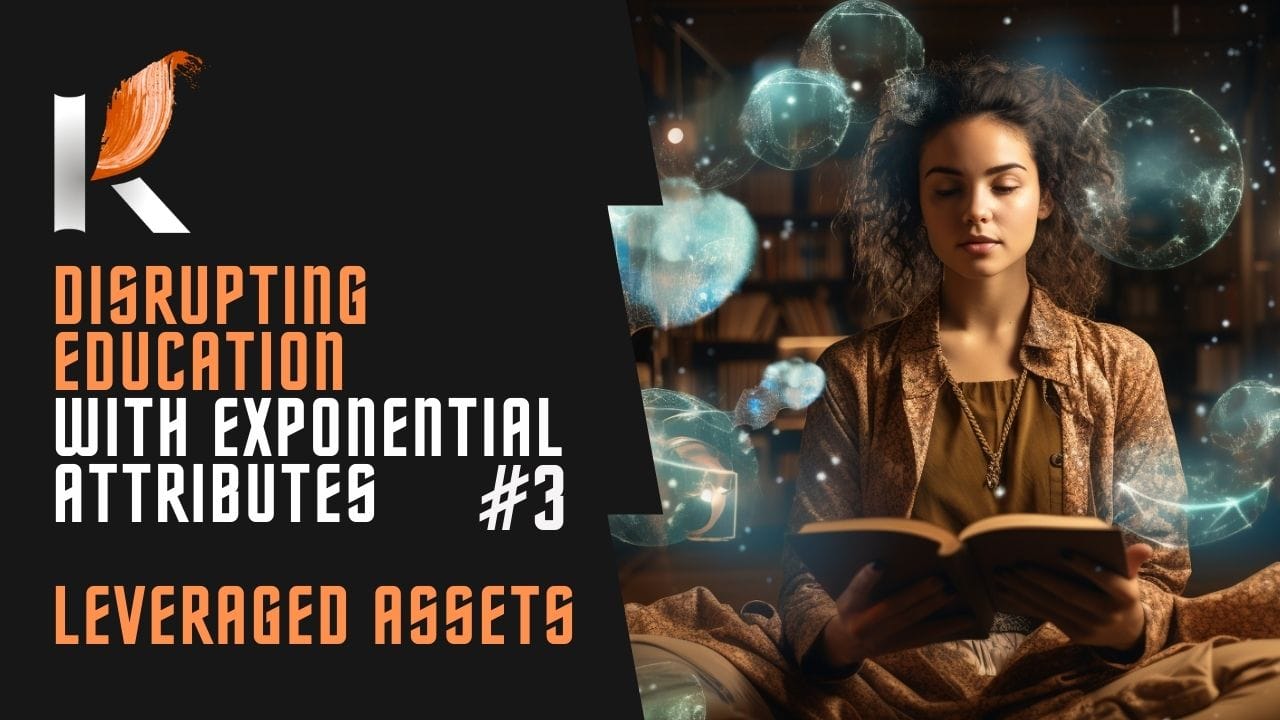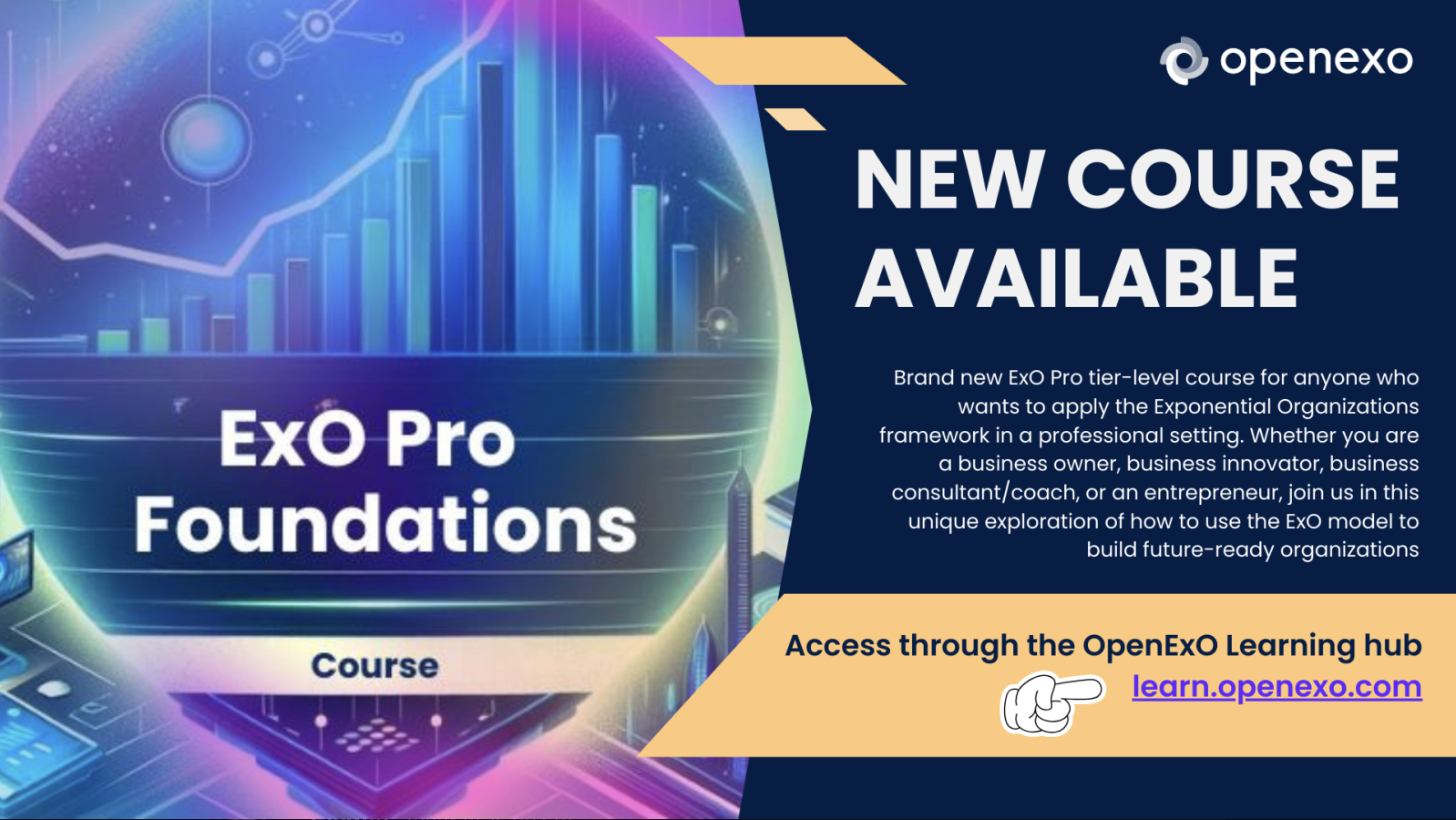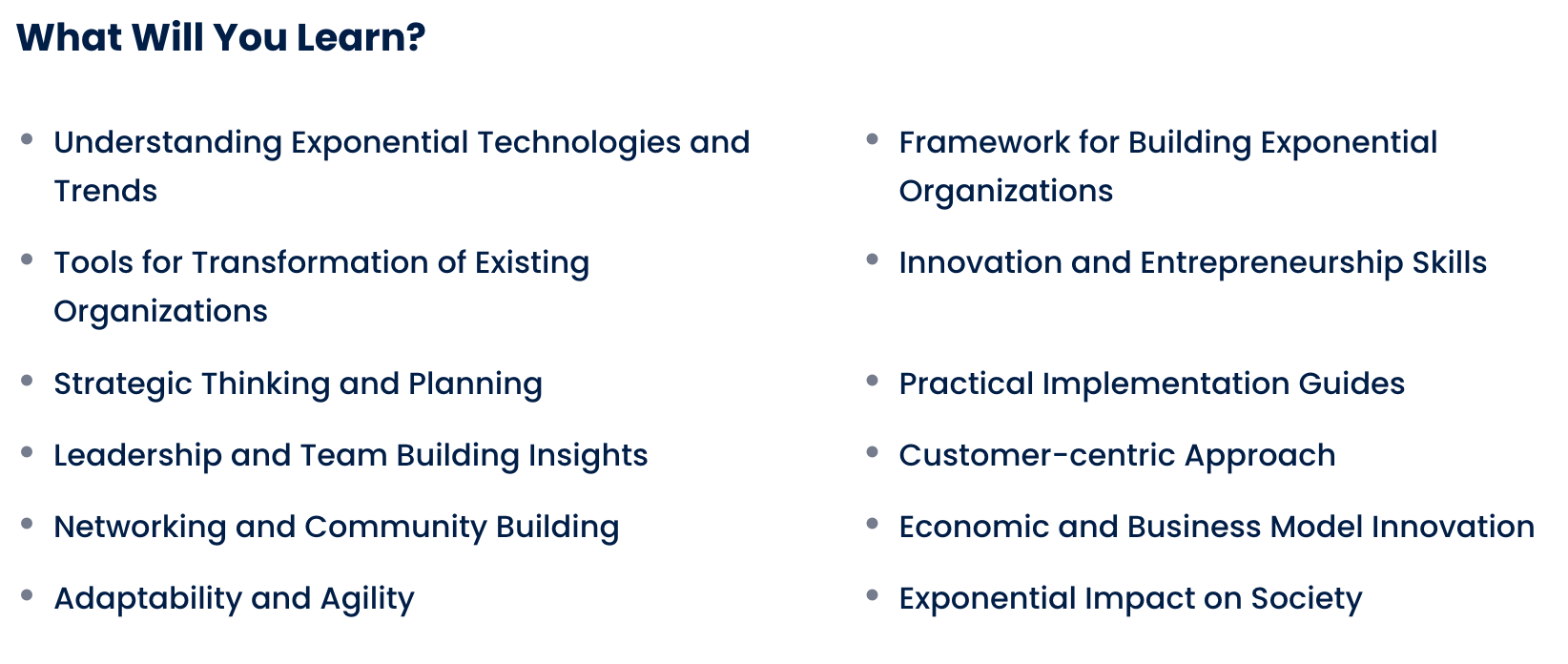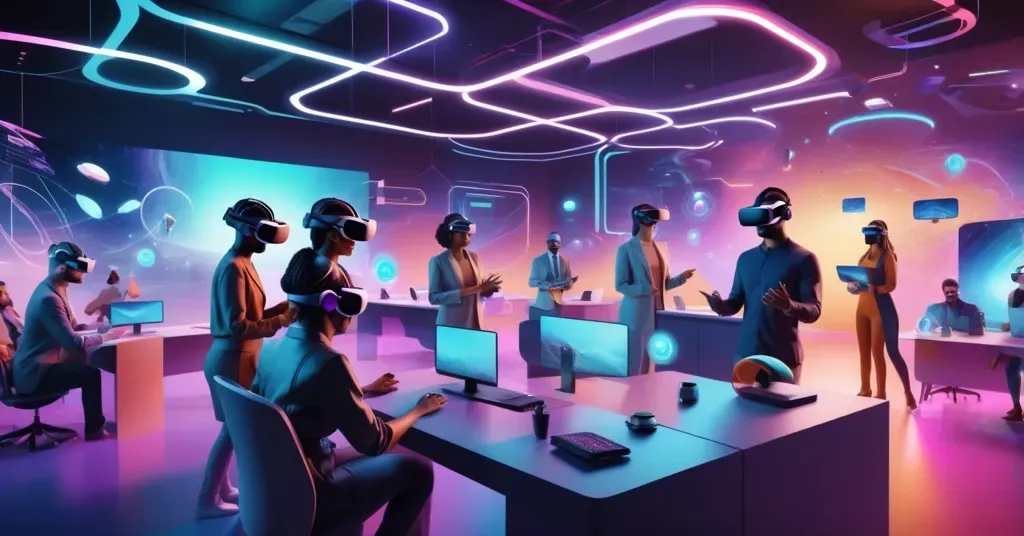
Disruptive Potential: How Exponential Attributes Are Transforming Education #3
Leveraging shared assets not only optimizes resource utilization but also cultivates a vibrant ecosystem for cross-pollination of ideas, promoting the development of cutting-edge educational programs and experiences
Welcome to the third step of your journey towards exponential education transformation. In the previous articles, we delved into the powerful roles of Staff on Demand, Community & Crowd, and Algorithms.
In the realm of education, leveraged assets extend beyond just digital resources and encompass physical facilities, equipment, and infrastructure. By tapping into shared or on-demand access models, educational institutions can circumvent the limitations of ownership and unlock new levels of flexibility, scalability, and cost-efficiency.
One prime example is the utilization of shared campuses, classrooms, and laboratory facilities. Platforms like Labster enable institutions to leverage virtual reality (VR) and augmented reality (AR) technologies to provide students with immersive, simulated learning environments for hands-on experiments and training without the need for expensive physical lab setups.
Educational organizations can also leverage shared equipment and resources through collaborative networks or rental models. For instance, institutions can access specialized scientific instruments, 3D printers, or production equipment on an as-needed basis, avoiding the costs of outright ownership and maintenance. Companies like Kwinco and LabX facilitate the sharing and rental of scientific and laboratory equipment among educational and research institutions.
Furthermore, the rise of coworking spaces and flexible learning hubs has opened up new opportunities for leveraging physical assets. Platforms like Impact Hub offer educational institutions access to modern, well-equipped spaces for hosting classes, workshops, or events without the overhead of maintaining dedicated facilities.
By embracing these leveraged asset models, educational organizations can optimize their resource utilization, reducing redundancies and unnecessary investments. They can quickly scale up or down their physical footprint and capabilities based on fluctuating demands without being constrained by the limitations of fixed assets.
Moreover, leveraging shared assets fosters collaboration and knowledge exchange among institutions, creating a vibrant ecosystem for innovation and best practice sharing. This approach not only enhances resource efficiency but also promotes cross-pollination of ideas, facilitating the development of cutting-edge educational programs and experiences.
As the education sector continues to evolve, the concept of leveraged assets will play a crucial role in enabling agility, cost-effectiveness, and access to state-of-the-art resources, empowering institutions to deliver exceptional learning experiences while staying ahead of the curve.
Additional examples include:
- Pearson – Pearson is a leading educational company that leverages its extensive network of publishers, authors, and educational experts to create and distribute educational materials and resources. By utilizing these partnerships and physical assets, Pearson is able to provide high-quality content and tools to support learning initiatives across various educational settings. Link to Pearson
- McGraw-Hill Education – McGraw-Hill Education is another example of a company that leverages its physical assets, such as textbooks, digital resources, and assessment tools, to provide comprehensive educational solutions to students and educators. By incorporating these assets into their platforms, McGraw-Hill Education enhances the learning experience and supports academic success for learners of all ages. Link to McGraw-Hill Education
- Google Classroom – Google Classroom is an educational platform that leverages Google’s suite of productivity tools, such as Google Docs, Google Drive, and Google Calendar, to facilitate communication, collaboration, and organization among teachers and students. By integrating these physical assets into the platform, Google Classroom streamlines workflow enhances productivity, and promotes a seamless learning experience for users. Link to Google Classroom
- Adobe Creative Cloud for Education – Adobe Creative Cloud for Education is a software suite that provides students and educators with access to industry-standard creative tools for design, photography, video editing, and more. By leveraging Adobe’s creative assets and technology, educational institutions can empower students to develop essential digital skills and unleash their creativity in the classroom. Link to Adobe Creative Cloud for Education
Virtual and Augmented Reality
Virtual reality (VR) and augmented reality (AR) technologies are transforming the educational landscape by offering immersive and interactive learning experiences that engage students like never before. These cutting-edge technologies have the potential to revolutionize the way we teach and learn, making education more engaging, accessible, and effective.
One notable example is Google Expeditions, an immersive educational platform that allows students to embark on virtual reality field trips to various locations around the world. By leveraging VR technology, Google Expeditions provides interactive learning experiences that bring lessons to life, enabling students to explore historical sites, natural wonders, and distant lands without leaving the classroom. This innovative approach not only captures students’ attention but also fosters a deeper understanding of the subject matter through firsthand virtual experiences.
Similarly, platforms like Nearpod VR and Alchemy VR are empowering teachers to create and deliver interactive lessons using AR/VR technology. By incorporating virtual reality experiences into the curriculum, these platforms enhance student engagement, foster deeper comprehension of complex concepts, and promote active learning in the classroom. Students can explore virtual environments, manipulate virtual objects, and gain hands-on experience with challenging subjects in a safe and controlled setting.
Furthermore, platforms like zSpace are leveraging AR/VR technology to revolutionize STEM education. By allowing students to manipulate virtual objects, conduct experiments, and explore complex scientific concepts in a hands-on and engaging way, zSpace is breaking down barriers and making abstract ideas more tangible and accessible. This immersive approach not only enhances students’ understanding but also cultivates their curiosity and passion for STEM subjects.
The integration of VR and AR technologies as leverage assets in education offers numerous benefits, including increased student engagement, improved retention of information, and the ability to provide personalized learning experiences tailored to individual needs and learning styles. Leveraging these immersive technologies also has the potential to bridge geographical barriers, enabling students from remote or underprivileged areas to access educational resources and experiences that were once out of reach.
As the adoption of VR and AR as leverage assets in education continues to grow, it is crucial for educators, policymakers, and technology companies to collaborate and develop best practices, ensuring that these technologies are effectively integrated into the curriculum and utilized to their full potential. By embracing the power of immersive technologies as leverage assets, we can create a more engaging, inclusive, and effective educational system that prepares students for the challenges and opportunities of the 21st century.


ExO Insight Newsletter
Join the newsletter to receive the latest updates in your inbox.








